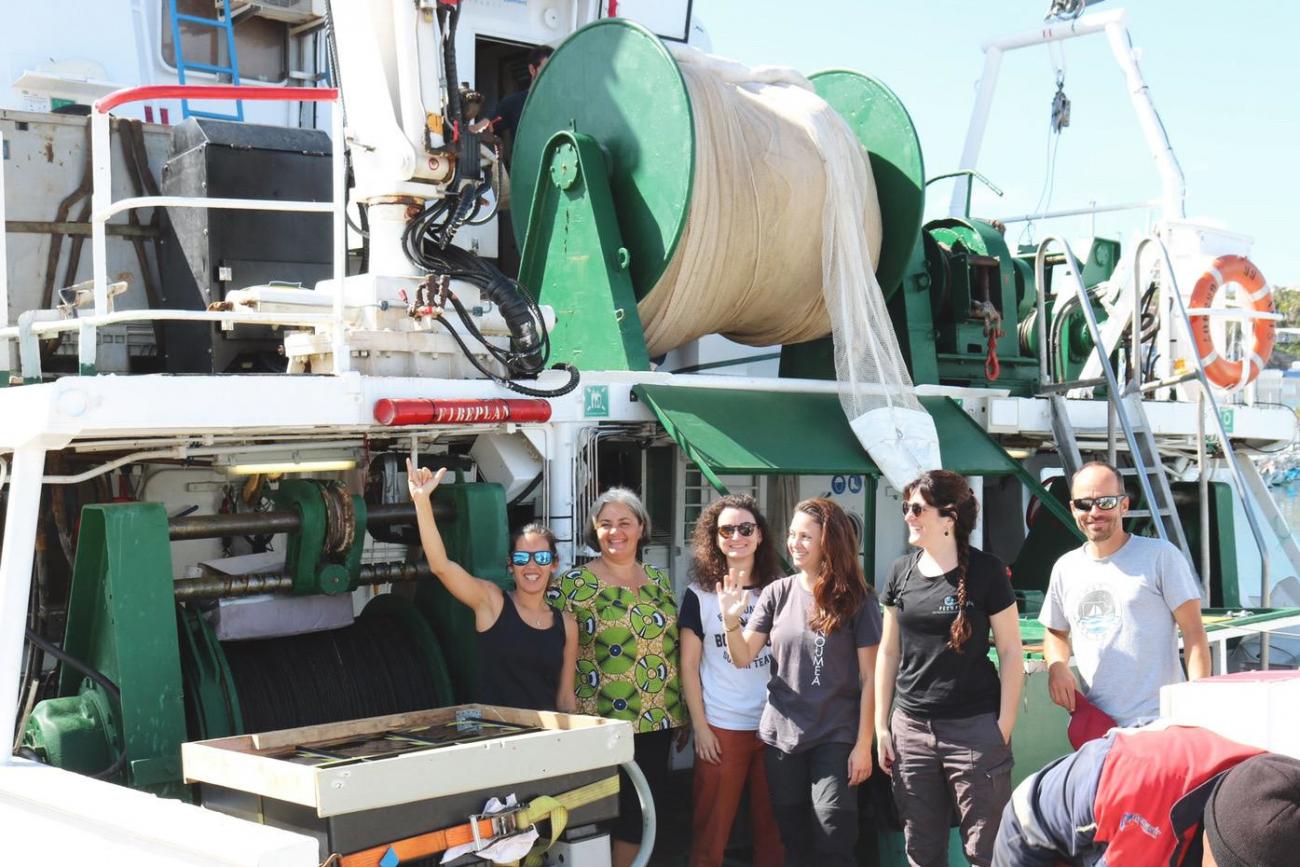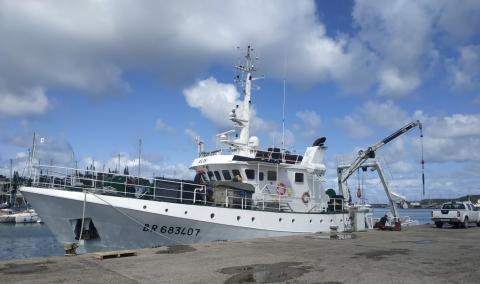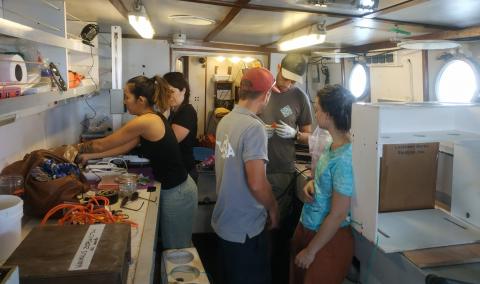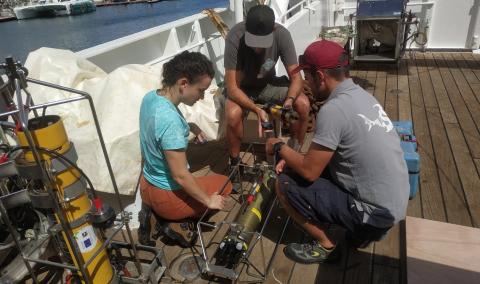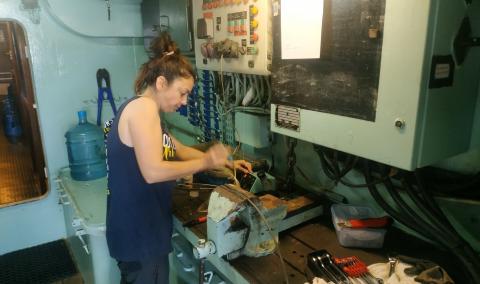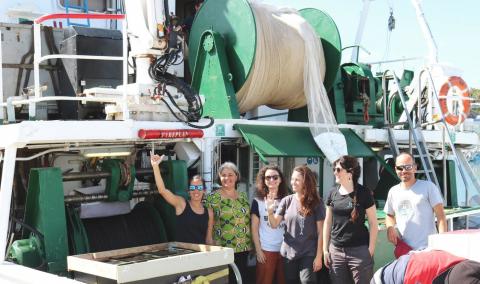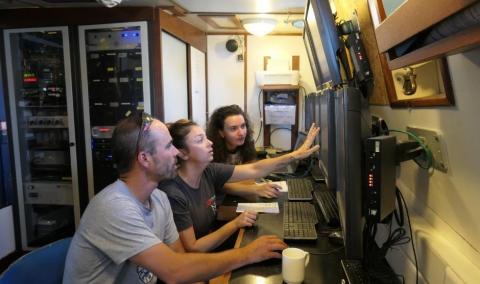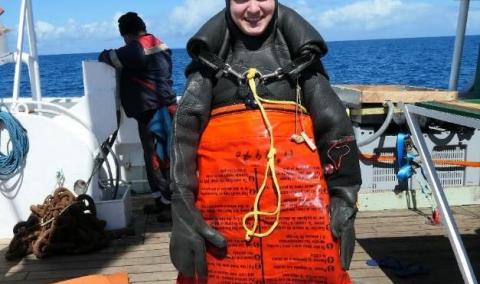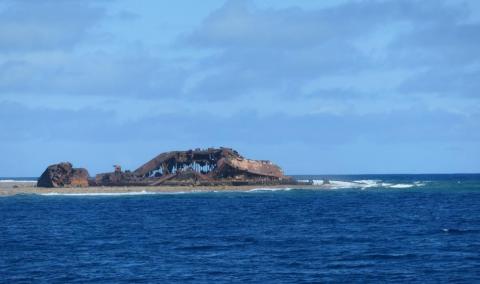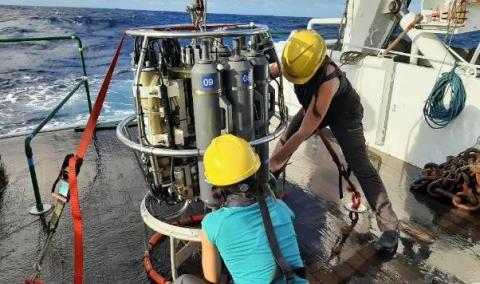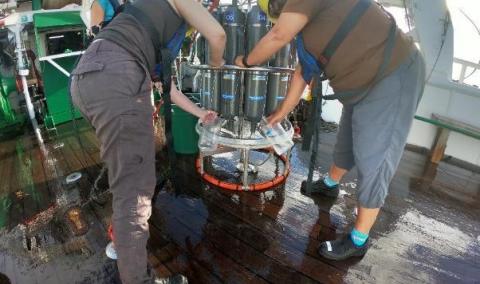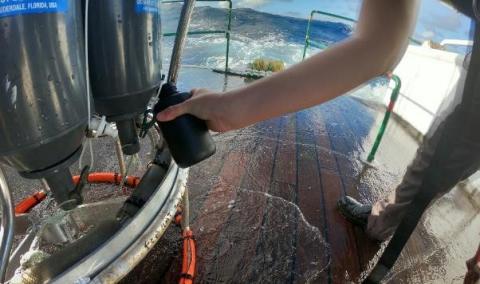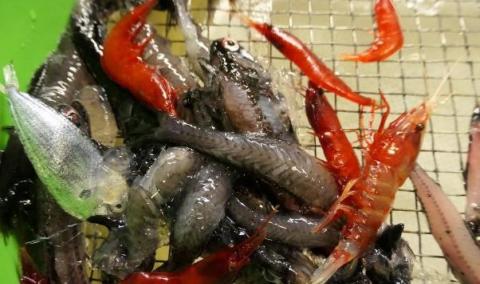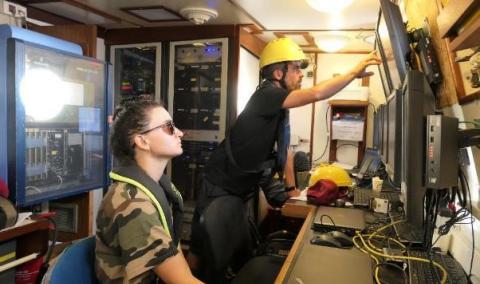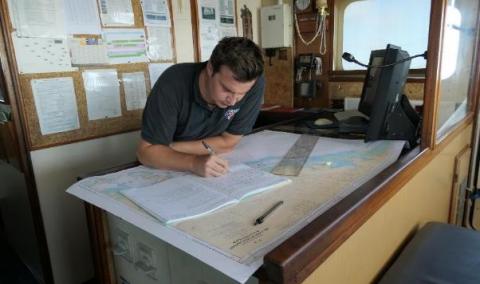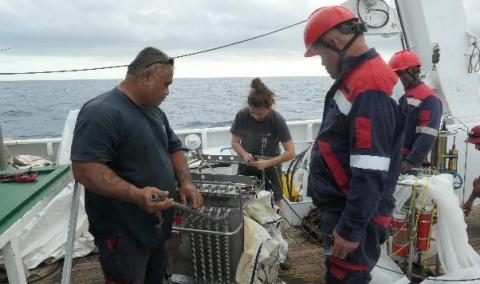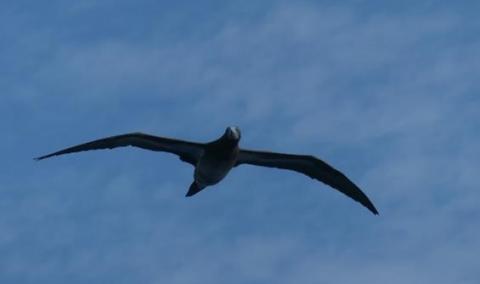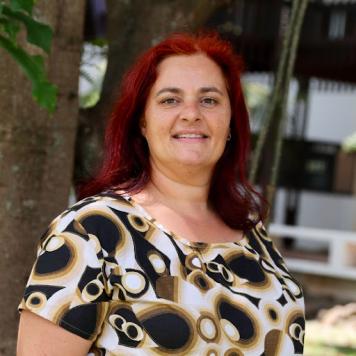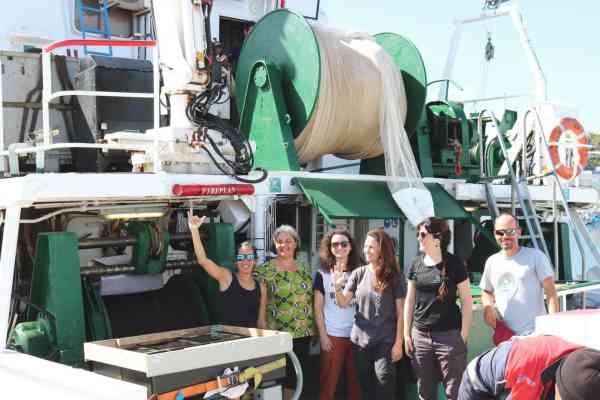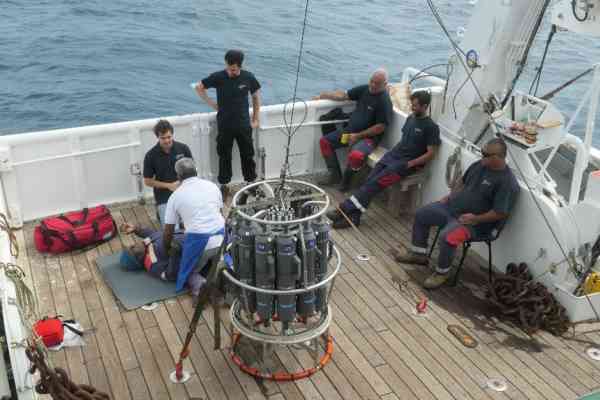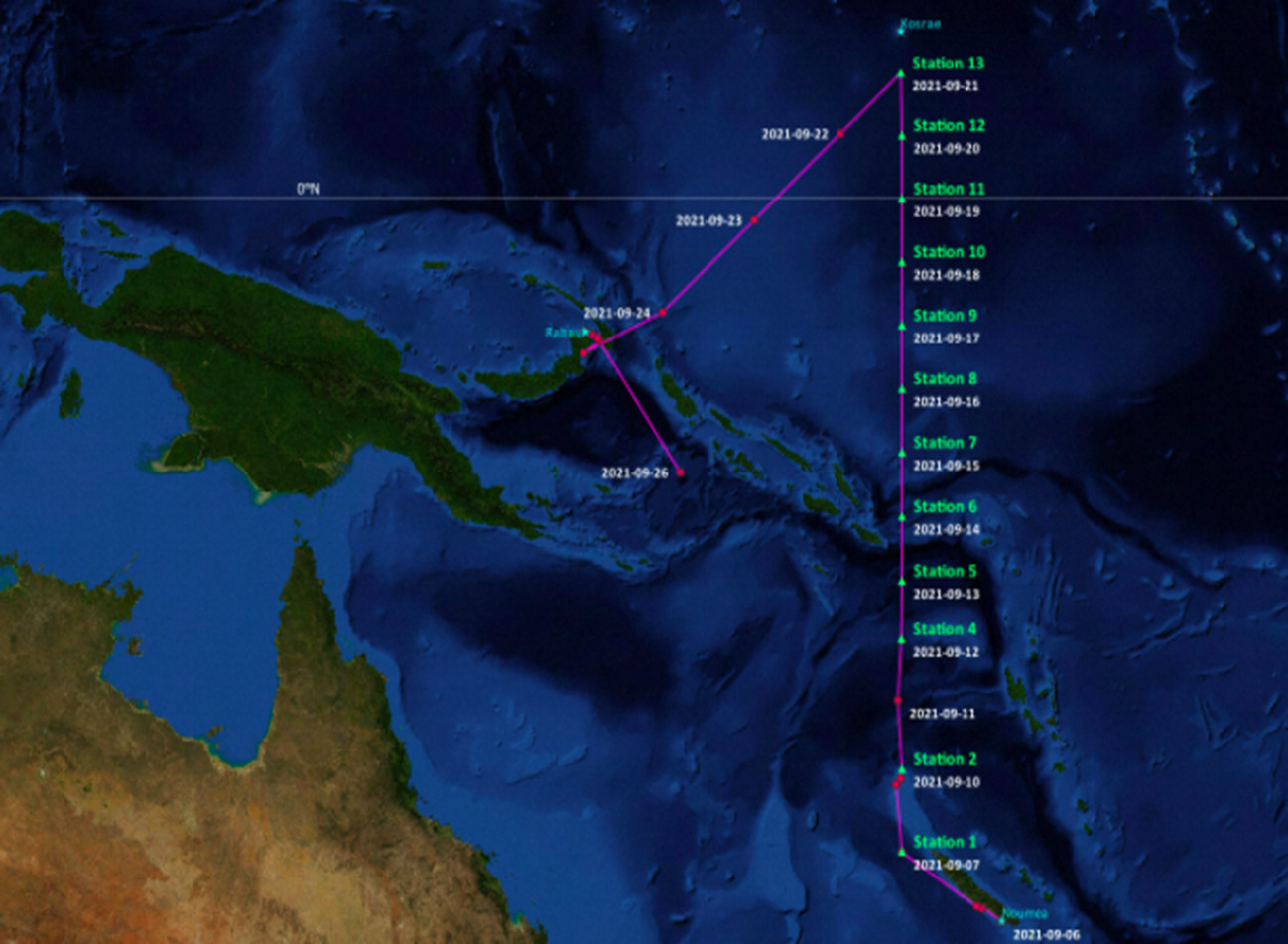
SPC, in collaboration with IRD, is engaging in a new series of oceanographic cruises across the Pacific to characterise the western and central Pacific Ocean including the Warm Pool, onboard RV Alis, which gave the name of the cruise series: WARMALIS.
Warmalis 1 is the first cruise that will cross the western Pacific from south to north, departing from Noumea in New Caledonia, finishing in Kosrae in the Federated States of Micronesia, and crossing Solomon Islands and International waters.
Warmalis 2 and Warmalis 3 will be conducted in 2022 and 2023, in the central Pacific (south-north transect from French Polynesia to Kiribati Line Islands), and at the Equator (east-west from French Polynesia to Papua-New Guinea) respectively.
The objective of the project is to understand the functioning of the pelagic ocean ecosystem and determine its influence on tuna resources in the western and central Pacific region. Our project will study the mid-trophic levels (zooplankton and micronekton) of the large pelagic ecosystems of the Pacific where more than 50% of the global tuna catches are produced. Zooplankton and micronekton are components linking the physical/chemical factors of the ocean, which influence their distribution and abundance, with the megafauna (e.g. tuna, marine mammals, seabirds) which are their predators. The aim of our project is to fill the important gap in knowledge on the large pelagic ecosystems of the Pacific. Our goal is to bring scientific knowledge for a sustainable management of the pelagic resources by understanding the functioning of the pelagic ecosystems (from physics to intermediate levels) and by collecting observations to validate and improve ecosystem models used to analyse the tuna resources (SEAPODYM).
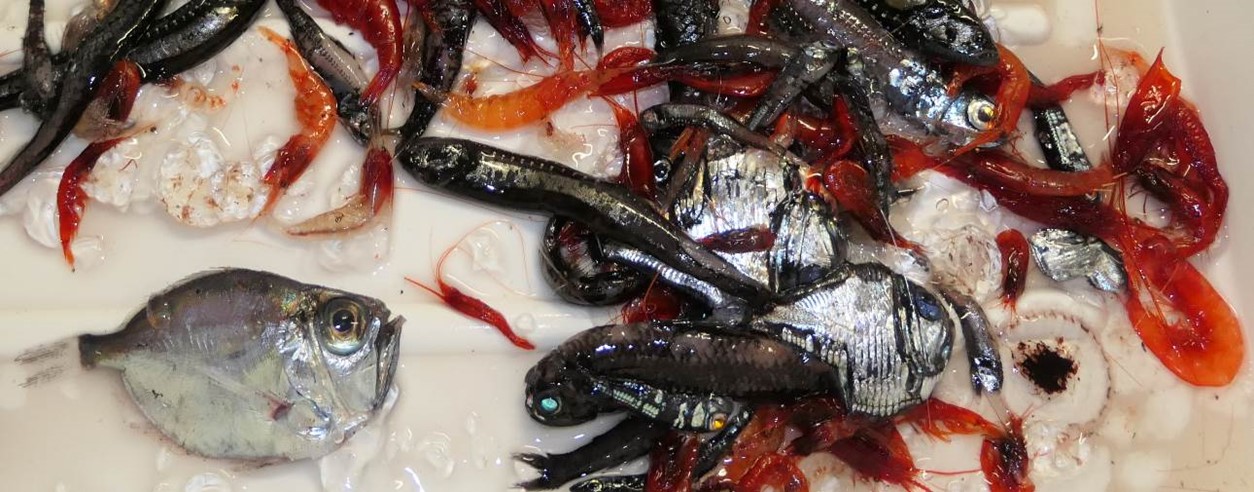
The Warmalis cruises are multidisciplinary, and we will collect seawater physical and chemical data as well as data on zooplankton and micronekton. To characterise physico-chemical conditions and primary production, we will measure temperature, salinity, oxygen, fluorescence, light, currents, nutrients, photosynthetic pigments, phytoplankton abundance, primary production, phytoplanktonic communities. Secondary production (zooplankton, micronekton) will be measured with acoustic (TAPS, WBAT, S-ADCP, EK60) and net sampling of zooplankton and micronekton.
Starting on 6th of September, the cruise will last 19 days during which 15 sampling stations will be visited, before reaching Kosrae around 24th of September. After a quick stop to refuel but no landing, the vessel will turn back to steam towards Noumea in around 10 days.
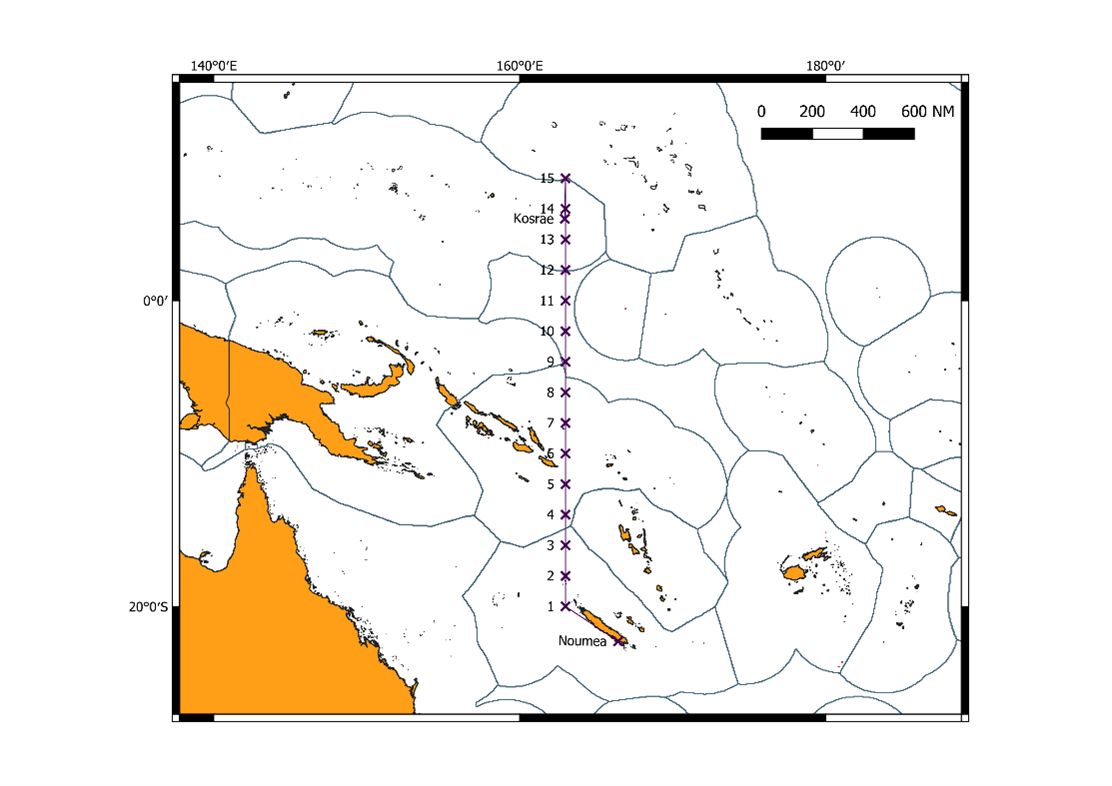
This cruise, in the framework of the MICROPAC project, is conducted with the financial support of the French ministry of armed forces (Direction des patrimoines, de la mémoire et des archives), the French ministry of Europe and Foreign Affairs (Pacific Fund), the French oceanographic fleet, the French ministry of studies, research and innovation, the LEFE-INSU, SPC and IRD.
2021 September 2
Four days before departure, the scientific team and the crew are busy preparing the vessel for a 1-month trip in complete autonomy. It means embarking a lot of food for 18 people, spare parts for the mechanics, and all the scientific equipment.
It took us the full day to get everything onboard, test all the instruments and making sure they work, and fixating everything no nothing moves when sea gets rough. We feel ready and are looking forward to starting the trip after months of preparation and a lot of uncertainty with the covid pandemic.
We received a lot of help to get prepared and to make sure this cruise gets conducted and we are grateful to everybody.
2021 September 6
We left this morning at 9:30 am as planned and some colleagues and friends came to see us off. We took advantage of the calm waters of the lagoon to do the safety exercises and to steam north. We went out of the lagoon through the Isié pass around 2:30 pm where the damaged wreck of a boat marks the entrance of the pass. The small swell out of the lagoon and our route to the north gave us a rather calm voyage for the moment. The acoustic instruments have been set up as soon as we left to start acquiring data on the micronekton and our first sampling station is planned for tomorrow afternoon.
2021 September 7 - 1st station
After 30 hours of downwind steaming, we arrived at the first sampling station. Most of the team and sailors have already done this work, but the first station allows us to review the sequence of operations.
For this cruise we decided to follow the same protocol, at the same time, every 24 hours. Thus, the work starts around 4 pm with 2 rosette descents to 250 and 600 m depth respectively to collect water for chemistry and phytoplankton and to make profiles of temperature, salinity, light, fluorescence, oxygen etc. Then, as soon as night fell around 6:30 pm, the TAPS was lowered to 200 m, an acoustic instrument for zooplankton, and zooplankton sampling was carried out at depths of up to 600 m with the hydrobios multinet, which allows the collection of organisms at 5 different depths. Finally, the last part of the evening was devoted to micronekton with a descent of the WBAT, an acoustic instrument, and the collection of organisms by pelagic trawling at different depths.
For this first station there was a small problem on the zooplankton multinet, and we cancelled this operation. As the wind increased with gusts to 30 knots and an average wind of more than 25 knots, the manoeuvres were complicated, and we shipped a few packs of sea. We also did only one micronekton trawl between 0 and 200 m depth, the weather conditions being too bad to attempt a trawl at 500 m. We did not collect many organisms, but it was very diversified with fish and shrimps.
This first station was very difficult for all of us with bad weather conditions and several of us suffered from sea sickness. We were happy to finish the work around 11:30 pm after a very busy day.
2021 September 9
After sampling station 1 we continued our route north but with winds averaging over 25 knots and gusts over 30 knots, we decided to find shelter and anchor. Indeed, the manoeuvres become dangerous and the quality of the data poor when the weather conditions are so bad.
We take advantage of this forced stop to make a number of repairs and adjustments to our instruments after the first station. This also gives us time to review and optimize our procedures for the next stations. The crew also has some work to do with various devices to repair such as the osmosis unit that provides us with fresh water. We took the opportunity to make a first processing of the few data collected. We are collecting measurements by continuous active acoustics (day and night) with the calibrated SIMRAD EK60 hull sounders. Four frequencies are used simultaneously: 38, 70, 120 and 200kHz, allowing to probe the water column up to 800, 400, 250 and 120m depth respectively. A measurement (a ping) is made every 3 seconds.
We hope the weather will allow us to resume operations on Friday.
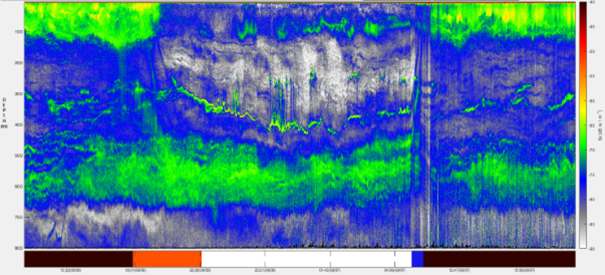
Echogram recorded at 38 kHz, the frequency most commonly used to study micronekton, showing the density of marine organisms in the water column between the surface and 800m depth (yellow-green for high densities, blue-white for low densities). This record corresponds to the 24 hours of 7th September 2021 from 0h00 to midnight. The horizontal bar under the echogram represents in black the night, in orange the dawn, in white the day and in blue the twilight. We can observe that micronekton organisms (1 to 20 cm) are mostly close to the surface at night and at depth (500-700m) during the day. They perform a vertical migration at sunrise and sunset.
To learn more about the adventures of the team on board the vessel, visit this page.
